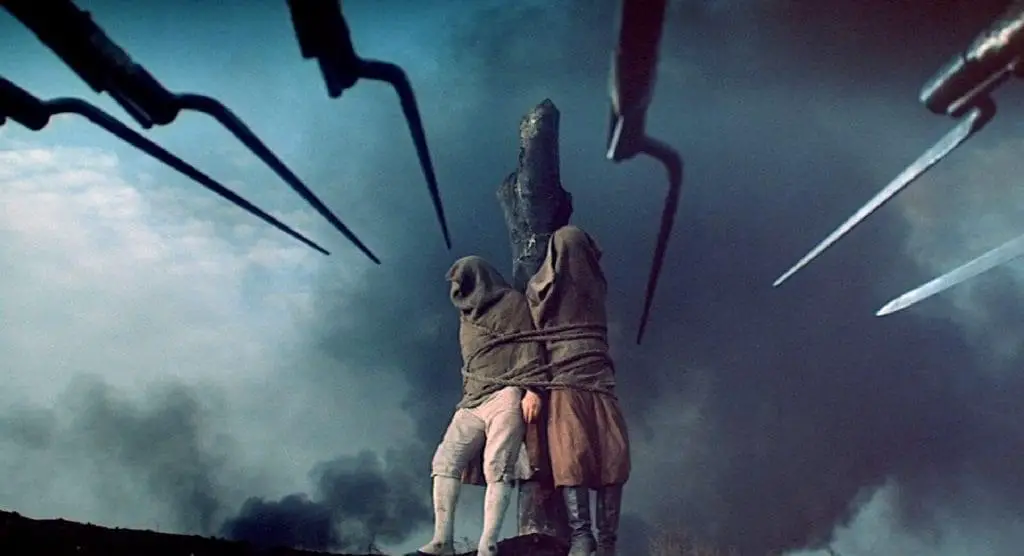
“Out in the West Texas town of…” Well, the name may not sound quite as poetic as El Paso, but Lubbock has certainly produced more than its share of musical poets. Among them are Buddy Holly, Waylon Jennings, the Legendary Stardust Cowboy and, from towns nearby, Bob Wills and Roy Orbison. The foursquare-solid new documentary “Lubbock Lights” calls our attention to three more loyal Lubbockites by the names of Joe Ely, Butch Hancock and Jimmie Dale Gilmore – perhaps better known as the short-lived, recently reunited Flatlanders.
Why anyone would have chosen to place a town in the middle of this hard, flat prairie land is a mystery most of the film’s interviewees – including, in a note of appropriate oddness, David Byrne – spout much verbiage trying to ascertain. Phrases like “endless boredom,” “desolate beauty” and “violent emptiness” are tossed out with deadpan humor. “It’s a good place to live, but I wouldn’t want to visit here,” says local fiddle titan Tommy Hancock of his dusty, windy hometown. (The documentary never makes explicitly clear if he and Butch Hancock are related; one assumes they must be father and son.)
When everyone is done describing the environs, director Amy Maner gets around to the real story: in the late 1960s, inspired by their town’s strange, crazy population of hippie hellraisers and churchgoing rednecks – as well as the revelatory Wolfman Jack radio broadcasts of their youths – pals Ely, Gilmore and Hancock decided to rent a house and play music, “to make something out of nothing.” From these long-ago jam sessions emerged a single, much-bootlegged album by the Flatlanders, which wasn’t officially released until ten years later (and then only in Europe). A full ten years after that, in 1990, the CD finally showed up on U.S. shelves. Given that the three each went on to successful solo careers, never having recorded together since, this album’s title was apropos: More a Legend Than a Band. Byrne opines that the Flatlanders were like a Texas-grown Velvet Underground: a group whose sales and visibility were miniscule, but whose lasting influence was immense.
But on the evidence of ancient-looking footage showing the Flatlanders playing a local country fair, as well as a later clip from the Montreux Jazz Festival, it’s frankly a little tough to understand why the Flatlanders are spoken of with such awed reverence – even more so in London, Paris and Berlin than in the U.S. Basically they just seem like a good bunch of guys who formed a solid, traditional country group…that happened to only have existed for a few months. (The fact that last year they finally released a second Flatlanders album, over 30 years after their debut, goes unnoted).
The documentary’s drifting, wavering focus is a liability, never making clear why the Flatlanders are so all-fired unique. (Personally, I’d like to see a definitive documentary on that current MTV superstar…country singer, what’s his name…Johnny Cash?) Perhaps a few more impressive, custom-made performance clips would have helped put the Flatlanders over more persuasively. And a late-breaking revelation of Lubbock’s eerie celestial light phenomenon – the Lights of the title – comes a bit late to hit home. “Lubbock Lights” is a mellow, gently funny trip, but it’s too laid-back to be truly illuminating.
